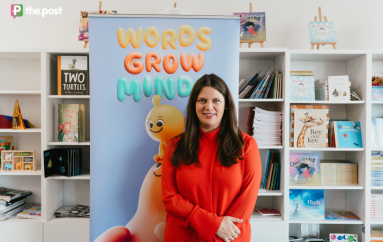In the Studio with Craig Glasson
For Craig Glasson, the studio is a ‘laboratory of ideas’. At times he needs silence to bring those ideas to fruition through his painstaking, design-inspired practice – but he also loves listening to techno music.

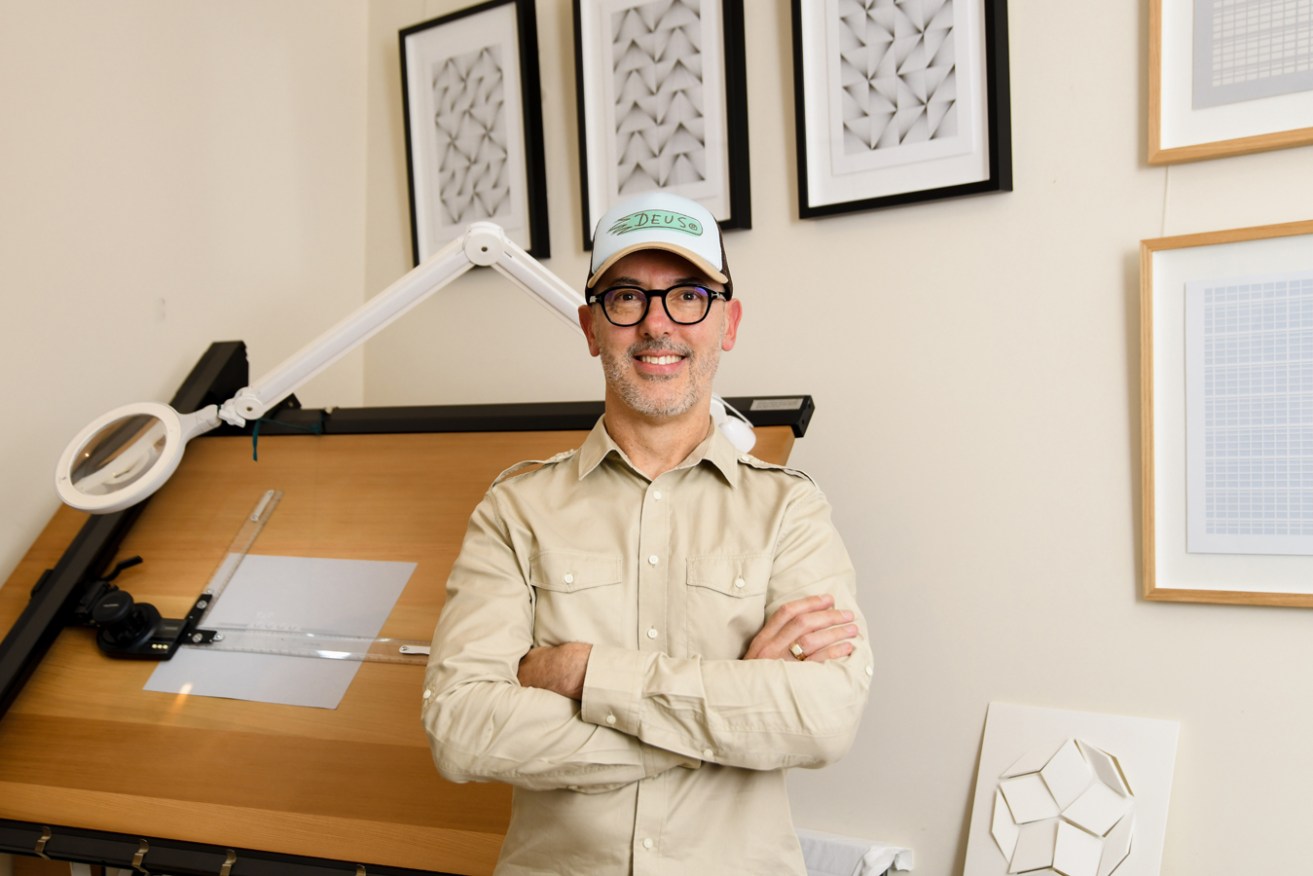
Craig Glasson's home studio embodies his artistic style. Photo: Jack Fenby / InReview
As Craig Glasson ushers us into his Kensington Park house, he gives a quick disclaimer that his studio is just a “spare room”.
It appears to be, rather, an embodiment of his artistic style. It’s crisp and bright, decorated with a sharply patterned rug that adds spot of colour.
His artworks, which are precise in nature, are just as precisely hung on the walls. There’s an organised yet cosy and lived-in feel to the space.
“As an artist, the studio is a laboratory of ideas,” says Glasson. “This is where it all happens. It’s like the engine room of my art practice.”
Glasson’s practice is built on repetition, precision and the investment of time. It’s a research-led practice that requires rigorous testing of materials and prototypes. This methodology demands an adequate space in which everything can unfold.
“It’s trial and error,” he says. “My studio is a space that I can control. It’s inspirational and it’s all my own.”
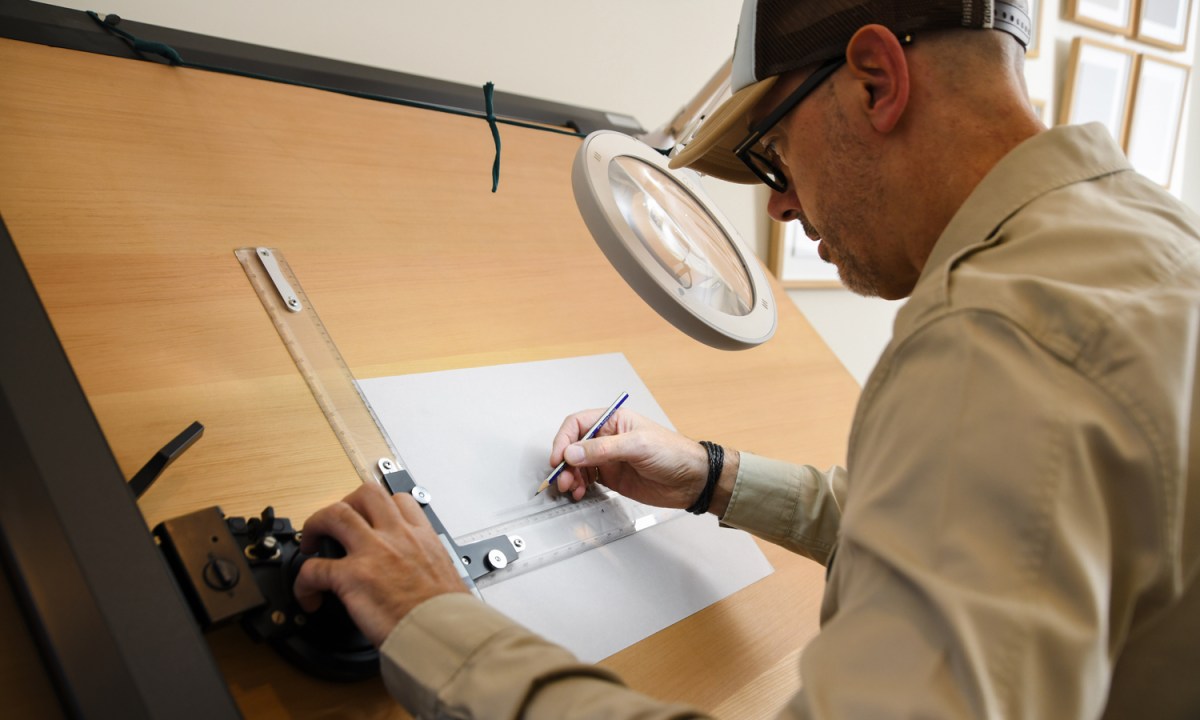
Precision is crucial in Glasson’s practice. Photo: Jack Fenby
Glasson’s work is informed by architecture and his studies in graphic design which, funnily enough, were never quite part of the plan.
“I always wanted to be an artist,” he explains.
“From a young age, I always had that creative instinct and ability. Some of it’s genetic; my maternal grandmother was a fashion designer. I get a lot of my creativity from her. Also, my paternal grandmother was a hobbyist painter, and her and I used to go off on tours to the National Gallery together.”
It’s a memory that clearly holds a lot of influence for the artist. But when it came to his studies, he had to negotiate with his parents.
“Me being an artist wasn’t the go for them, but I said, ‘How about graphic design?’ And they said, ‘Okay, we can see that working.’
“They were terrified that I was going to turn into some new-age punk or something. But, you know, I didn’t. I got through college without getting a mohawk.”
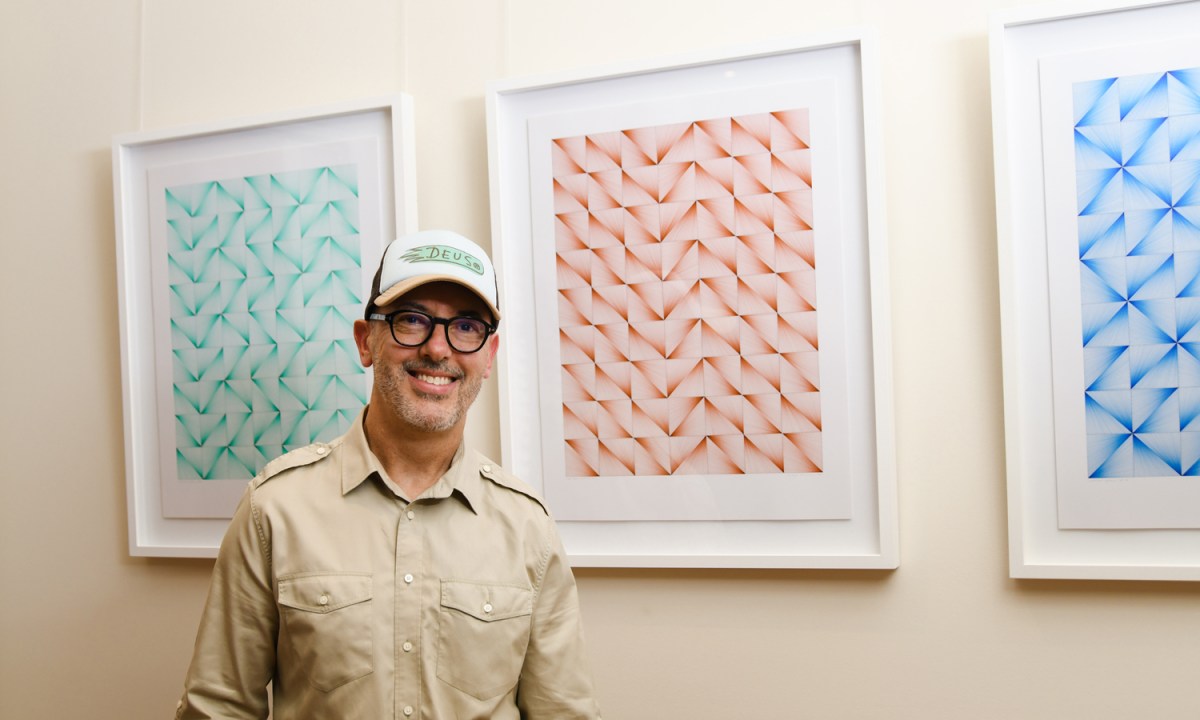
Craig Glasson with some of the works hanging in his studio. Photo: Jack Fenby
The impacts of this negotiation have come full circle. Glasson’s work is now grounded in multi-dimensional compositions, geometric form, and the basic design principles of colour, shape and texture. This led him to a recent residency with Adelaide’s JPE Design Studio, facilitated through a partnership between the JPE and Guildhouse.
“With an art practice that is interested in teasing out notions of space and time, architecture fits really neatly in that,” says Glasson.
“I’m often referencing architectural motifs in my work. In fact, it has a lot in common with architectural drawings and plans and diagrams and scale models, so the residency was absolutely perfect.”
The history of the design studio also had an impact on Glasson.
“I looked through the archive of projects from JPE Design Studio over the decades – they’re one of our leading, oldest architecture firms,” he says.
“They were designing buildings with sandstone – buildings along North Terrace – there’s history there. They’ve come through the mid-century modern and now are with contemporary architecture.
“What stood out to me was the use of materials. Materiality and repetition – I was drawn to these projects that used repetition to create impact.”
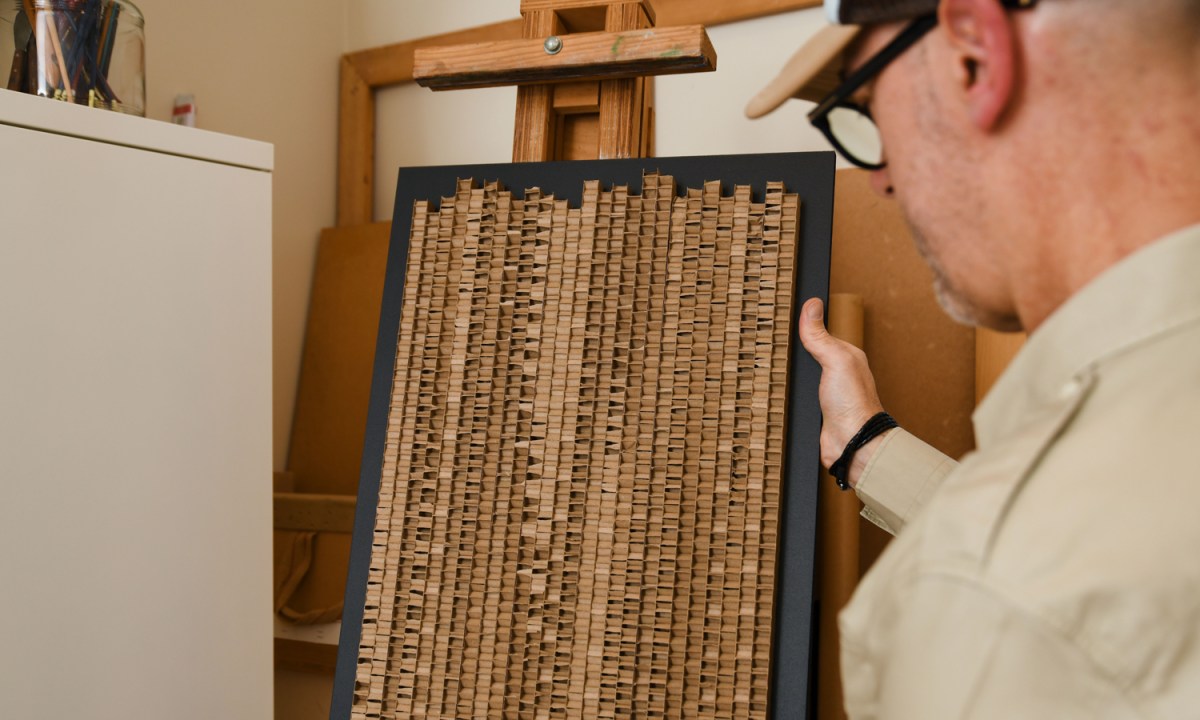
All the elements of Glasson’s artworks are hand-cut. Photo: Jack Fenby
The works that hang on the walls of Glasson’s studio are a product of his time at JPE. Some are subtle impressions created with samples of material he acquired during his residency; these rely on the fall of light to see their intricate detail.
At the end of the residency, Glasson had 15 pieces – some on paper and some three-dimensional works – which culminated in the exhibition called Form before function, a title that encapsulates the ethos of his work.
“It’s a great outcome to be able to put your work out there, but nerve-racking, of course. Your soul is vulnerable and on the line.”
The nature of Glasson’s artwork is reductive. It reduces the material to only itself and the space around it, working with light and shade, the positive and negative, and the spaces between.
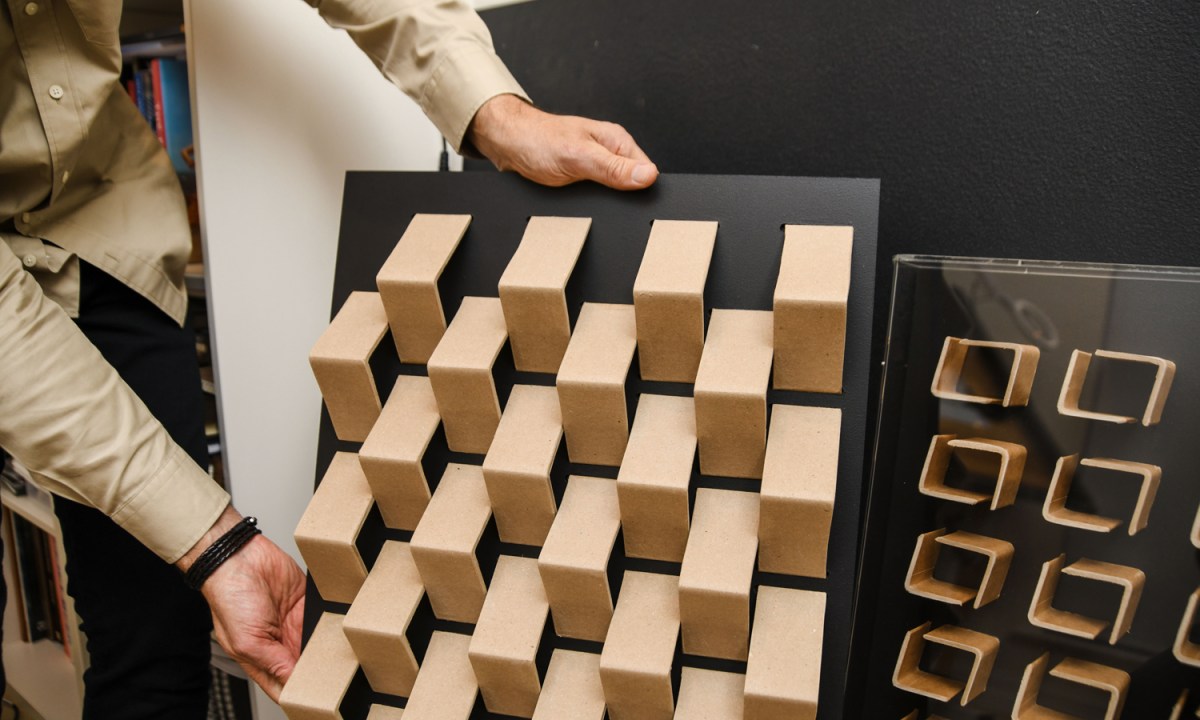
Light and shade are recurring features in the artist’s work. Photo: Jack Fenby
As a self-professed “control freak”, method and control are hallmarks of the artist’s practice.
“When something’s inherent, it’s so hard to fight it,” he says. “I’m open to experimentation, but it’s always about controlling the process, controlling the materials, and seeing where that leads.
“I do a lot of material thinking, and I want to know what materials can do, extending or pushing the boundaries of the material. I like to do this part in silence.”
Once he’s made his way through this part of the process and resolved any technical issues, however, he welcomes some music in his studio: “I’m really into techno music! But I’ve also got to concentrate, so it’s a bit of a balancing act.”
There’s a juxtaposition to Glasson’s approach that is a signature of his work: while it requires incredible accuracy, he always insists on there being a marker of the handmade and human. He never uses an eraser, so when viewing his work you can see how he has drafted some of the lines and details.
“You’ll see the thinking that goes behind the architecture of an idea,” he says.
“Everything is hand-cut, and it could so easily be laser-cut. I could program it into a piece of software, and it would just spit them out, hundreds in just seconds. But I’m about investing time. That’s what it’s all about. The artist’s hand being evident in the work.”
In a world where so much is automated – and we are faced with the impending impact of AI on the way we conceptualise art – this time, investment and labour, and the imperfections that come with that, are part of what makes the artist’s work precious.
“I submit to this torture test,” says Glasson.
“Those drawing marathons and that repetitious process – I know what I’m in for. But it’s so rewarding at the end of it. And that’s what I’m all about.
“It’s as much about my relationship with the work as it is about the work itself.”
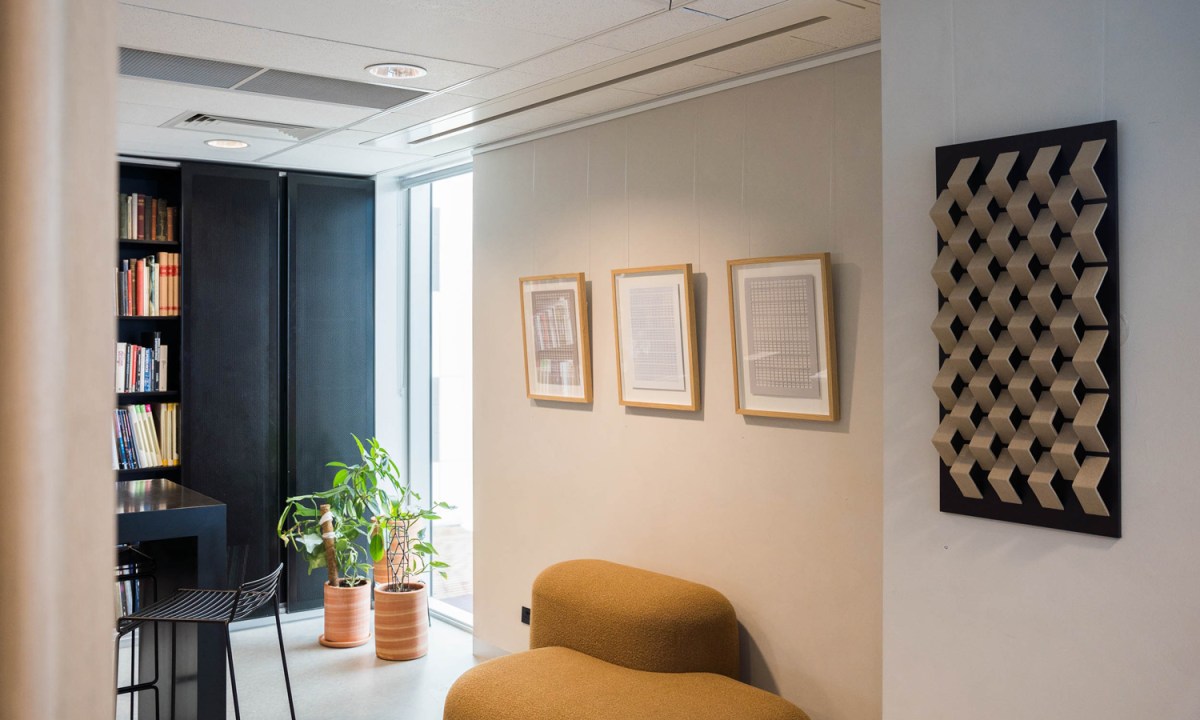
Form before function: Craig Glasson’s JPE Design Studio residency culminated in an exhibition of his work. Photo: Lana Adams
Read more about Craig Glasson’s artistic practice on his website. The next JPE Artist in Residence is Michelle Kelly, who will show her work during the 2023 SALA Festival.
In the Studio is a regular series presented by InReview in partnership with not-for-profit organisation Guildhouse. The series shares interesting stories about South Australian visual artists, craftspeople and designers, offering insight into their artistic practices and a behind-the-scenes look at their studios or work spaces. Read our previous stories here.


